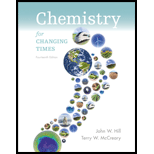
(a)
Interpretation:
Whether the bonds are polar or not and bond angle of  (chloroform) should be determined along with whether the molecule is whole polar or not.
(chloroform) should be determined along with whether the molecule is whole polar or not.
Concept introduction:
- The bond is polar if there is a greater electronegativity difference between the two bonded atoms.
- The bond angle is dependent upon the molecular geometry of molecule.
- The molecule is polar if there are polar bonds present in them and the dipole of the bonds does not cancel each other or there is a net dipole moment associated with the molecule.
(b)
Interpretation:
Whether the bonds are polar or not and bond angle of  (boron trichloride) should be determined along with whether the molecule is whole polar or not.
(boron trichloride) should be determined along with whether the molecule is whole polar or not.
Concept introduction:
- The bond is polar if there is a greater electronegativity difference between the two bonded atoms.
- The bond angle is dependent upon the molecular geometry of molecule.
- The molecule is polar if there are polar bonds present in them and the dipole of the bonds does not cancel each other or there is a net dipole moment associated with the molecule.
(c)
Interpretation:
Whether the bonds are polar or not and bond angle of  (carbon tetrafluoride) should be determined along with whether the molecule is whole polar or not.
(carbon tetrafluoride) should be determined along with whether the molecule is whole polar or not.
Concept introduction:
- The bond is polar if there is a greater electronegativity difference between the two bonded atoms.
- The bond angle is dependent upon the molecular geometry of molecule.
- The molecule is polar if there are polar bonds present in them and the dipole of the bonds does not cancel each other or there is a net dipole moment associated with the molecule.
(d)
Interpretation:
Whether the bonds are polar or not and bond angle of  (sulfur difluoride) should be determined along with whether the molecule is whole polar or not.
(sulfur difluoride) should be determined along with whether the molecule is whole polar or not.
Concept introduction:
- The bond is polar if there is a greater electronegativity difference between the two bonded atoms.
- The bond angle is dependent upon the molecular geometry of molecule.
- The molecule is polar if there are polar bonds present in them and the dipole of the bonds does not cancel each other or there is a net dipole moment associated with the molecule.
(e)
Interpretation:
Whether the bonds are polar or not and bond angle of  (Nitrogen triiodide) should be determined along with whether the molecule is whole polar or not.
(Nitrogen triiodide) should be determined along with whether the molecule is whole polar or not.
Concept introduction:
- The bond is polar if there is a greater electronegativity difference between the two bonded atoms.
- The bond angle is dependent upon the molecular geometry of molecule.
- The molecule is polar if there are polar bonds present in them and the dipole of the bonds does not cancel each other or there is a net dipole moment associated with the molecule.
(f)
Interpretation:
Whether the bonds are polar or not and bond angle of  (Dichlorodifluoromethane) should be determined along with whether the molecule is whole polar or not.
(Dichlorodifluoromethane) should be determined along with whether the molecule is whole polar or not.
Concept introduction:
- The bond is polar if there is a greater electronegativity difference between the two bonded atoms.
- The bond angle is dependent upon the molecular geometry of molecule.
- The molecule is polar if there are polar bonds present in them and the dipole of the bonds does not cancel each other or there is a net dipole moment associated with the molecule.
Want to see the full answer?
Check out a sample textbook solution
Chapter 4 Solutions
Chemistry For Changing Times (14th Edition)
 ChemistryChemistryISBN:9781305957404Author:Steven S. Zumdahl, Susan A. Zumdahl, Donald J. DeCostePublisher:Cengage Learning
ChemistryChemistryISBN:9781305957404Author:Steven S. Zumdahl, Susan A. Zumdahl, Donald J. DeCostePublisher:Cengage Learning ChemistryChemistryISBN:9781259911156Author:Raymond Chang Dr., Jason Overby ProfessorPublisher:McGraw-Hill Education
ChemistryChemistryISBN:9781259911156Author:Raymond Chang Dr., Jason Overby ProfessorPublisher:McGraw-Hill Education Principles of Instrumental AnalysisChemistryISBN:9781305577213Author:Douglas A. Skoog, F. James Holler, Stanley R. CrouchPublisher:Cengage Learning
Principles of Instrumental AnalysisChemistryISBN:9781305577213Author:Douglas A. Skoog, F. James Holler, Stanley R. CrouchPublisher:Cengage Learning Organic ChemistryChemistryISBN:9780078021558Author:Janice Gorzynski Smith Dr.Publisher:McGraw-Hill Education
Organic ChemistryChemistryISBN:9780078021558Author:Janice Gorzynski Smith Dr.Publisher:McGraw-Hill Education Chemistry: Principles and ReactionsChemistryISBN:9781305079373Author:William L. Masterton, Cecile N. HurleyPublisher:Cengage Learning
Chemistry: Principles and ReactionsChemistryISBN:9781305079373Author:William L. Masterton, Cecile N. HurleyPublisher:Cengage Learning Elementary Principles of Chemical Processes, Bind...ChemistryISBN:9781118431221Author:Richard M. Felder, Ronald W. Rousseau, Lisa G. BullardPublisher:WILEY
Elementary Principles of Chemical Processes, Bind...ChemistryISBN:9781118431221Author:Richard M. Felder, Ronald W. Rousseau, Lisa G. BullardPublisher:WILEY





